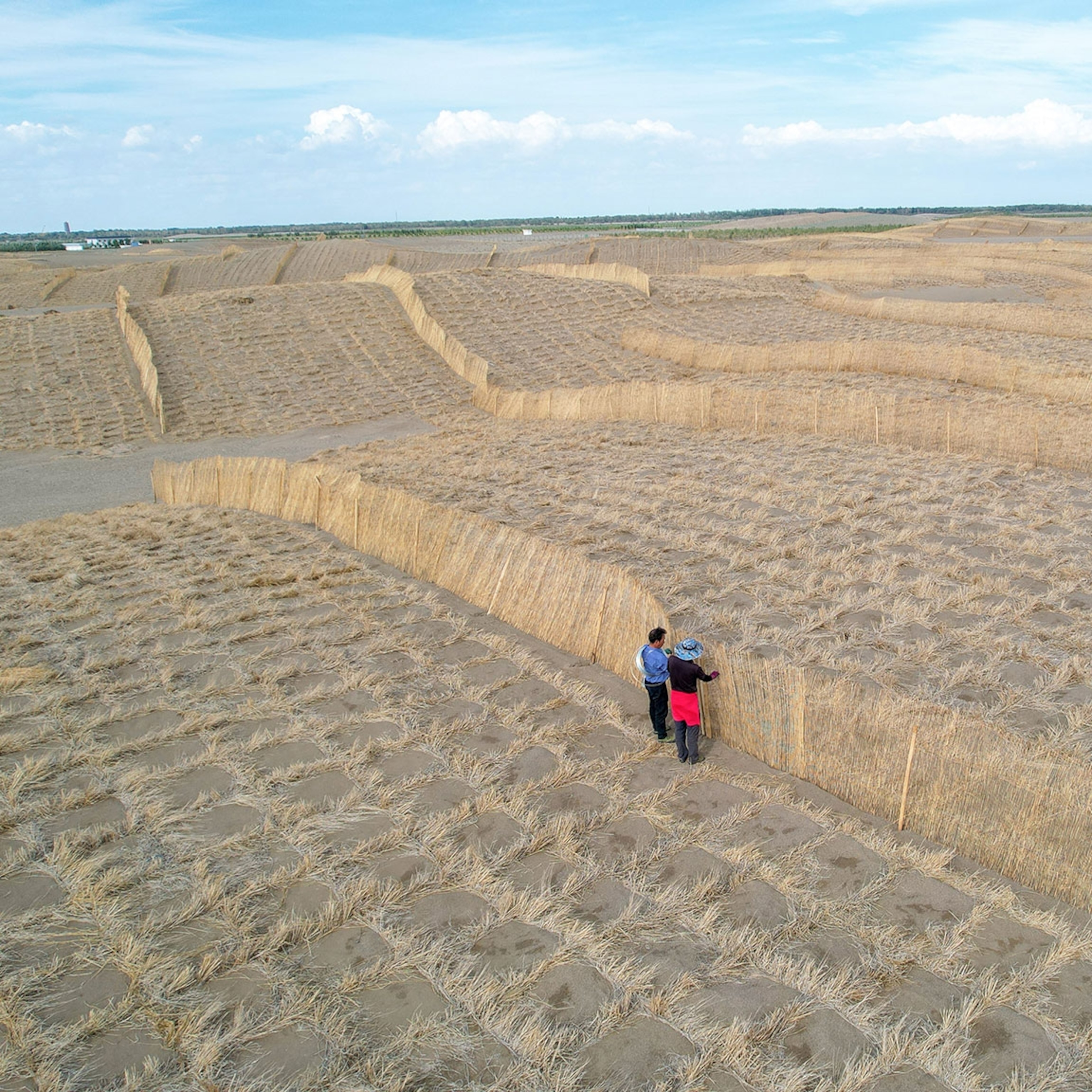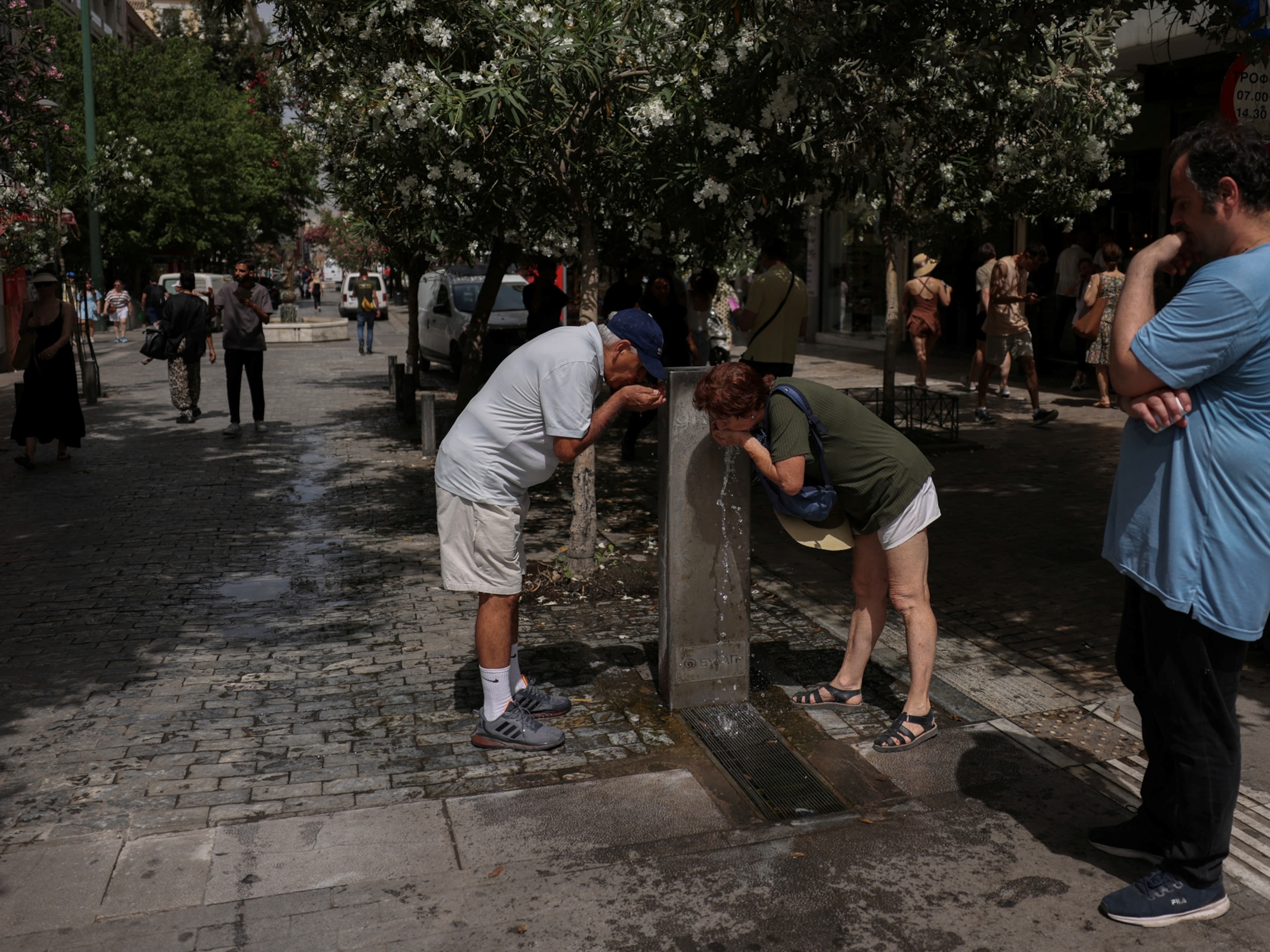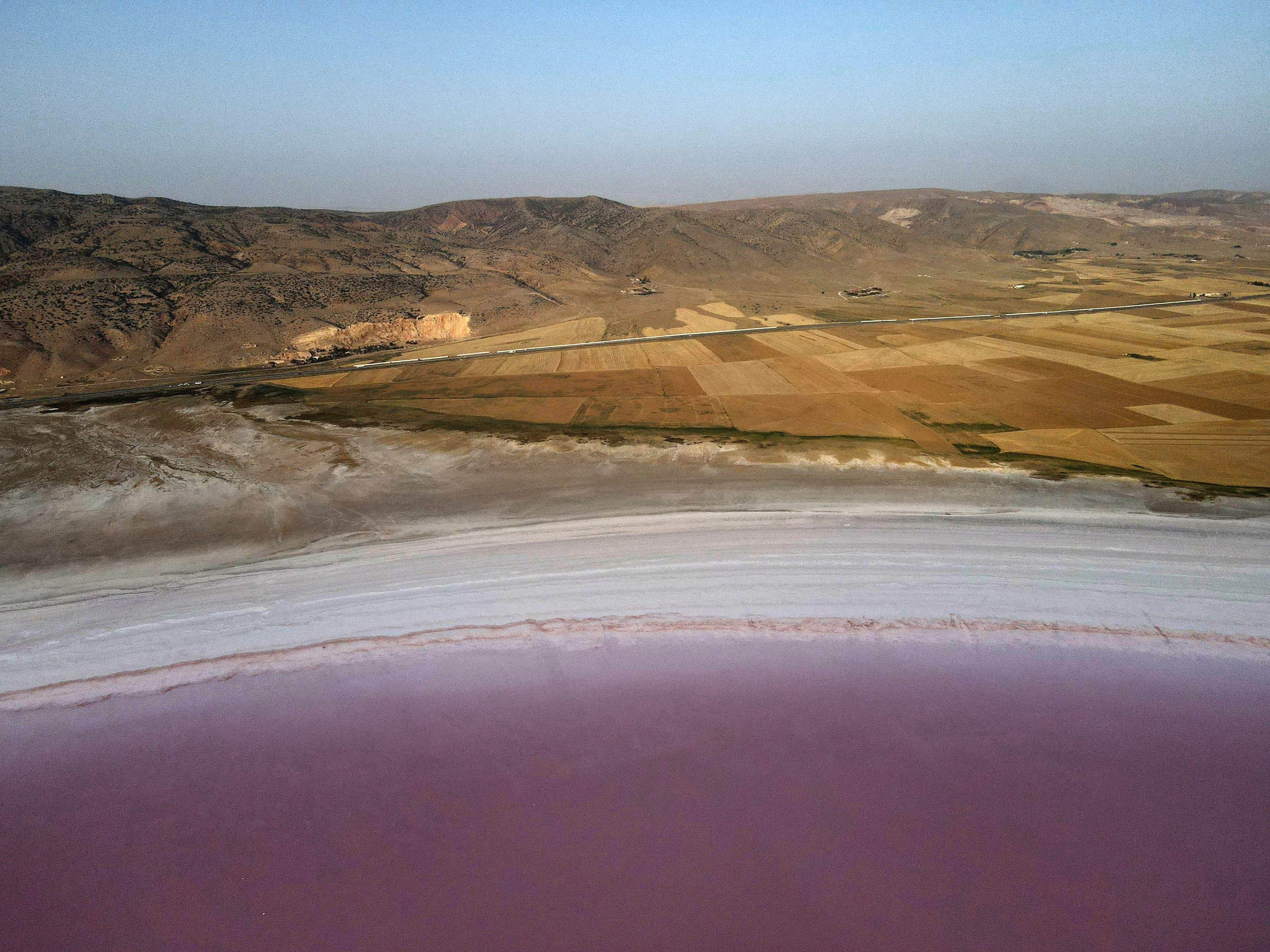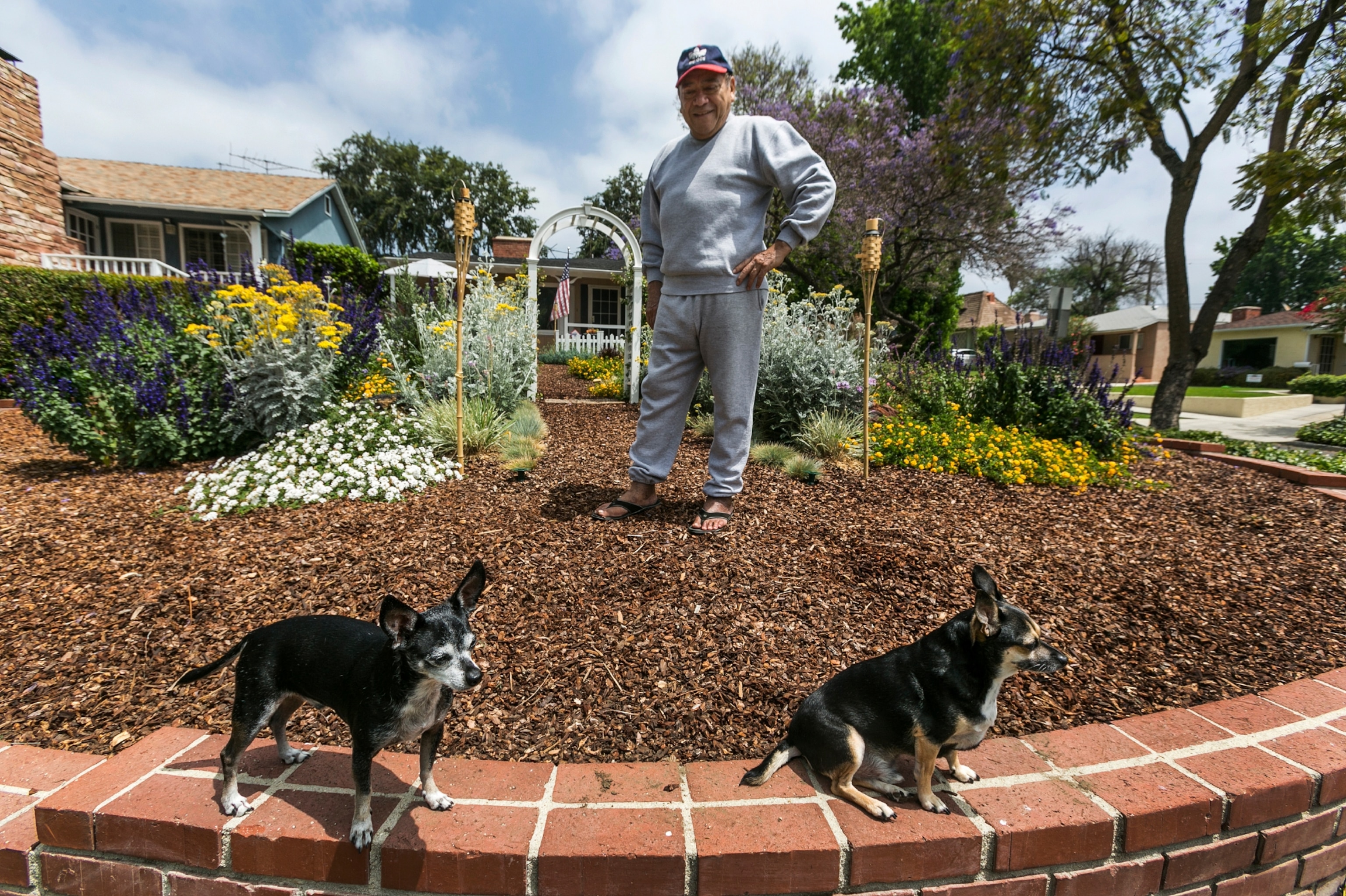
They've Seen Lots of Droughts, But This One's Different
This time, crispy lawns, short showers, and unflushed toilets may be the new normal. If that fails? “Beat everyone to Oregon,” one Californian says.
BERKELEY, California — In the drought-plagued suburbs east of San Francisco Bay, John Baker watches his home’s water meter more closely than his TV.
Having lived through two other major droughts over the past four decades, the 67-year-old software engineer once again is doing everything he can think of to save water. Laundry is washed once every three weeks, water for daily tasks is meted out drip by drip, and the long, hot showers Baker used to love are now history. This regime has cut his family’s water use in the past year to fewer than 40 gallons per person each day, less than half of the state average. (Read “5 Things You Should Know About California’s Water Crisis.”)
But as California’s four-years-and-counting dry spell wears on, Baker and other drought veterans say this one is unlike anything they have experienced before.
We’re all wondering, is this the start of something much bigger?John Baker, resident of Kensington, Calif.
During the droughts of 1976-77 and 1987-1992, Californians were confident that the rains and snows—and their lifestyles—would return to normal. Now, heading into another arid summer, with cities facing unprecedented statewide water restrictions, they share a growing realization that things may never be “normal” again. (Read “If You Think the Water Crisis Can't Get Worse, Wait Until the Aquifers Are Drained.”)
“What’s different about this drought?” asks Baker. “A lot of things.” The severity and scope scare him more than past droughts, and the specter of climate change looms large. While the last protracted dry spell seemed manageable, this time, “we’re all wondering, is this the start of something much bigger?”
Many Californians now see water scarcity as the new reality, creating a water-miser culture that some say may be permanent. This May, residential water use dropped 29 percent compared with May, 2013.
Los Angeles attorney Laura Vender sees the signs of change everywhere. During the last long drought, she recalls, people turned off sprinklers and drained pools—but quickly reverted to their usual ways after El Niño rains returned with vengeance in 1993. Now, some of these California icons are being permanently sacrificed to drought.
“People are just ripping up their lawns and putting down gravel. They’re saying ‘forget about it,’” Vender says. “It’s not a real attractive look. Kind of nouvelle San Quentin….Another thing they’re doing is painting their lawns green. Not a bad idea, I guess. But it’ll confuse your dog.”
An avid gardener, Vender has exchanged her own thirsty, calla lilies, and hydrangeas for low-water plants. All her neighbors in Los Angeles’ Hancock Park have dull, crispy lawns.
In Southern California, a Metropolitan Water District program offering rebates for turf removal has proved so popular its $100 million budget was depleted within a year. The budget has been expanded to $350 million—the largest such program in the nation—and is expected to pay for removing about 175 million square feet of water-guzzling lawns in its area serving 17 million people.
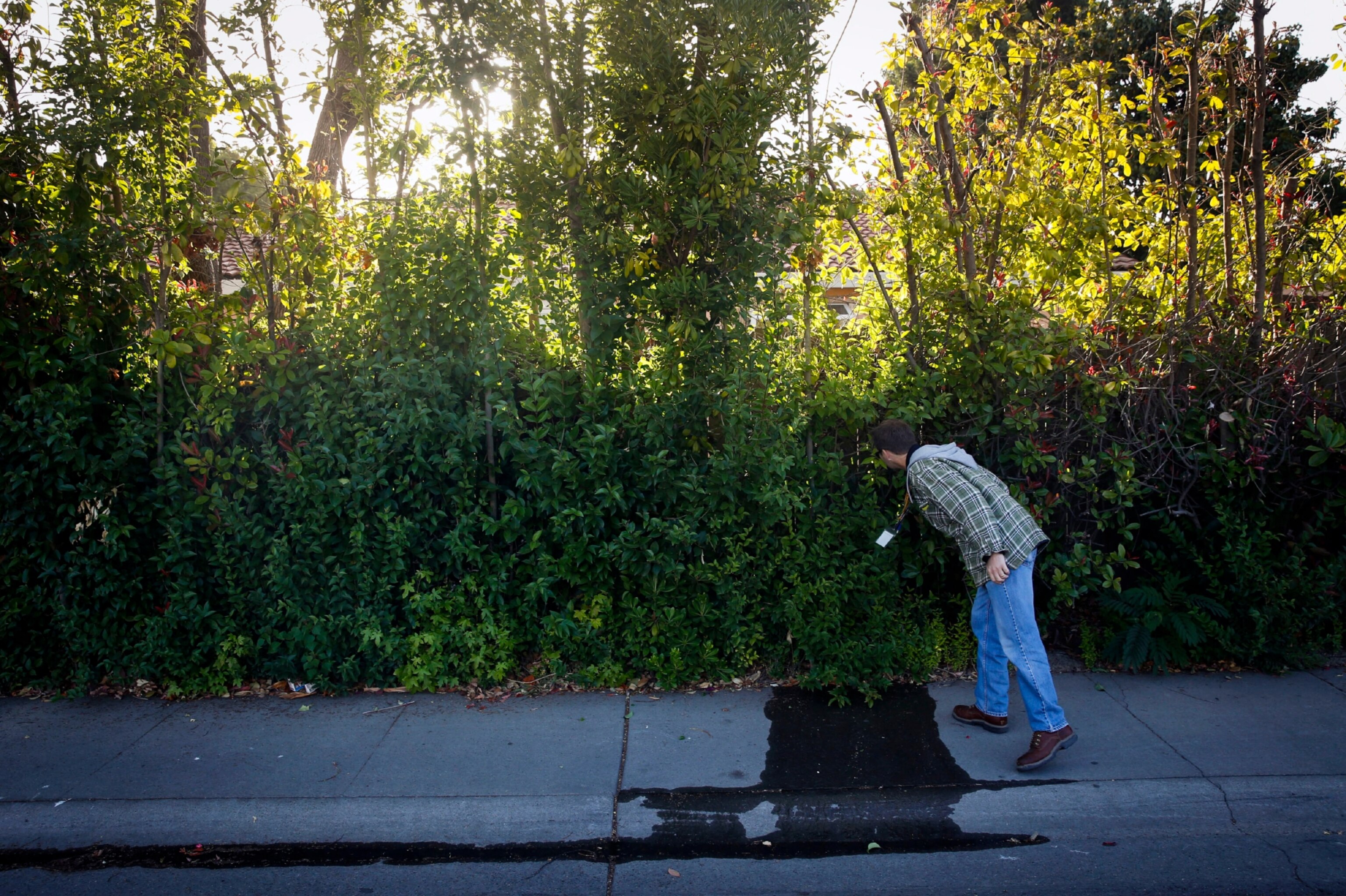
“We continue to have exponential interest,” says spokesman Bob Muir. “We’re not sure just how long the additional money is going to last.”
This Drought “Just Feels Scarier”
Los Angeles golf courses have replaced verdant grass ruffs with decomposed granite. And dead plantings cover city boulevards, with trees in the parks soon to follow.
“The coyotes are so thirsty that they’re roaming around during the day,” Vender says. “They’re coming out of Griffith Park and they’re crossing Sunset Boulevard to get here.”
Like Baker, Vender is more worried today than she was during the last big drought in the late ‘80s and early ‘90s. “We didn’t have global warming then,” she said. “Now it could be permanent.”
Fellow drought veteran Cary Hart in Sacramento shares their fears.
It’s a much harsher and crowded and less-resilient situation than we had back then.Felicia Marcus, State Water Resources Control Board
“This one just feels scarier, psychologically,” the retired pediatrician says. She had a house in Santa Barbara during the 1987-92 drought, when that city had the greatest water shortage of the state’s metropolitan areas.
“We were very aware” of Santa Barbara’s prolonged state of emergency, she says. “We weren’t watering our landscape, and we were putting buckets in the shower, and we weren’t flushing the toilet. We were doing everything we could think of to save water.”

But while that ordeal was severe, Hart and her family always felt that if they took steps to conserve water, they would make it through. Now, she says, “There’s the idea that it’s going to keep going, that maybe we’re not going to be able to cut back as much as we need to… And then what’s going to happen?”
In fact, the effects on California will be far greater today than during previous droughts, says drought veteran Felicia Marcus. Chair of California’s Water Resources Control Board, Marcus was with at Los Angeles Department of Public Works during the drought in the late 1980s and early ‘90s. “It’s a much harsher and crowded and less-resilient situation than we had back then,” she says.
“It’s also worse precipitation-wise,” she adds. The Sierra snowpack, source of three-quarters of the state’s water supply, is nearly nil today, meaning there’s no runoff on the way for low reservoirs. “We’re just in a worse situation all around.”
The severity has brought a new term, “drought-shaming,” to the California lexicon. Now there are hotlines for tattling on profligate neighbors and websites where photos of verdant landscapes are posted for public scorn.
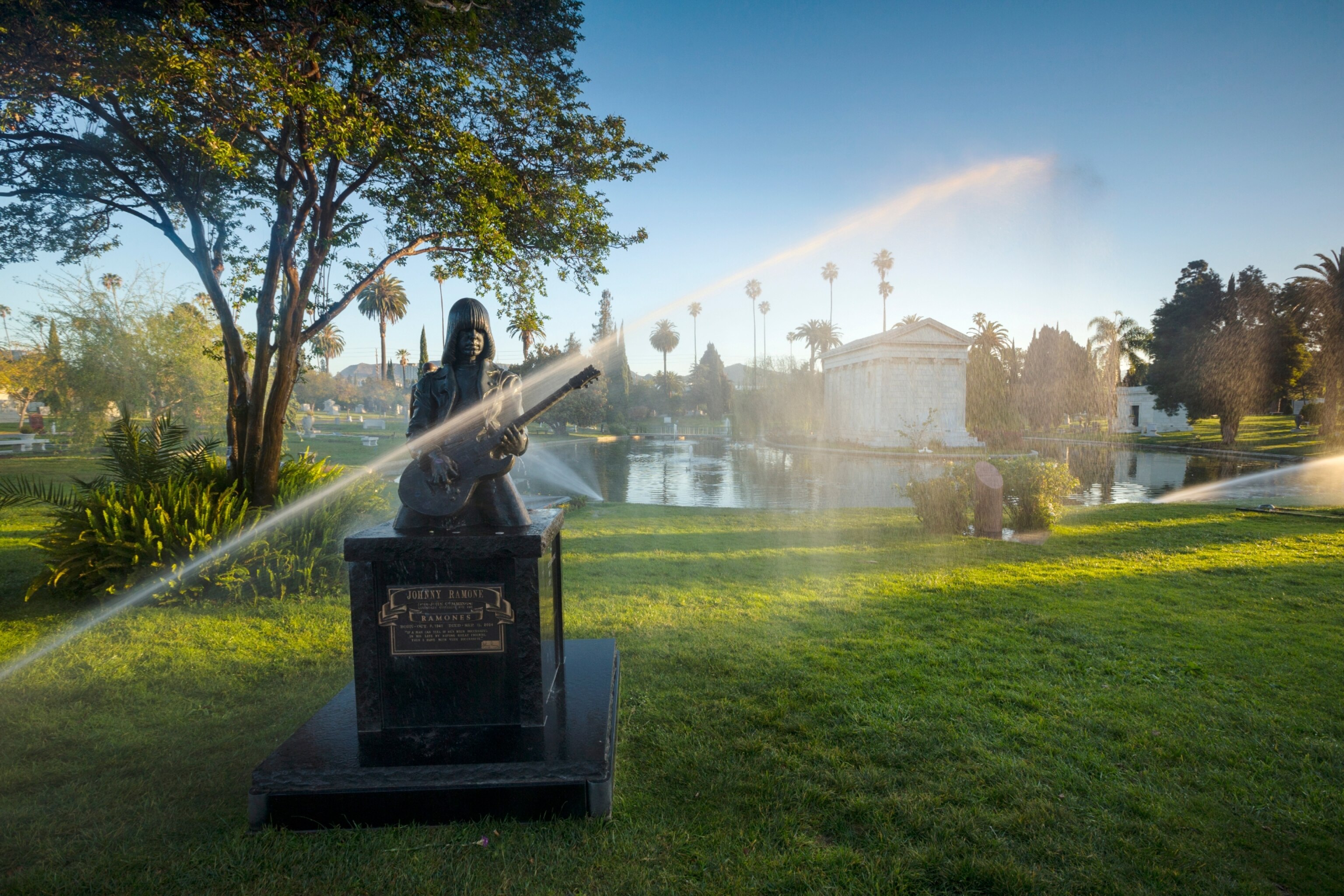
“I guess I am less tolerant of water wasters and whiners,” says Hart, who is annoyed to see water from overactive sprinklers running in the streets on her early-morning dog-walks.
“I’m in Beverly Hills quite a bit and the people there have very green lawns,” Vender says.
Save Our Pools and Flowers
But while many drought veterans say they can tolerate yellow lawns, stewing toilets, “Navy showers,” and other such concessions, there are some lines they fervently hope won’t be crossed.
For Hart, it’s her swimming pool. “I hope I’ll be able to keep it full,” she says. “That’s why we’re cutting back so much on everything else.”
For Vender, it’s her flowers. ““It’s the California dream to wake up in the morning and have everything blooming,” she says. “I don’t want to live in a desert.”
For Baker, the end of Californians’ water-squandering lifestyle is a welcome outcome. The sacrifices are tolerable — so far.
“The idea that the state would change in a very permanent way, treating water as it should be treated, as a very precious resource, kind of makes me happy,” he says.
But he fears that the state could someday flat-out run out of water, and he toys with the idea of moving away.
“Things collapse very quickly, all of a sudden you’re scrambling,” Baker says. “I want to beat everyone to Oregon if that happens.”


